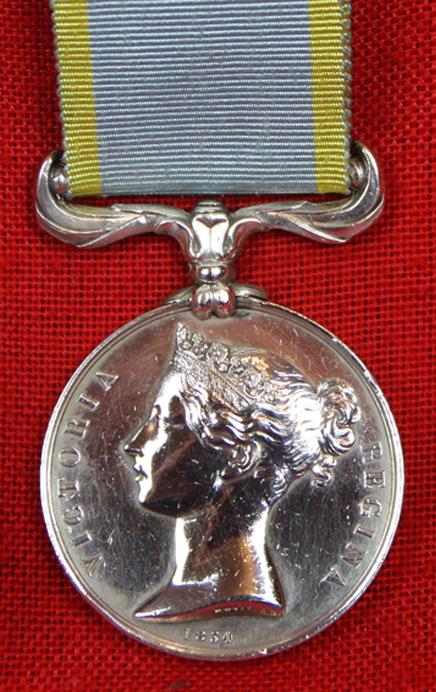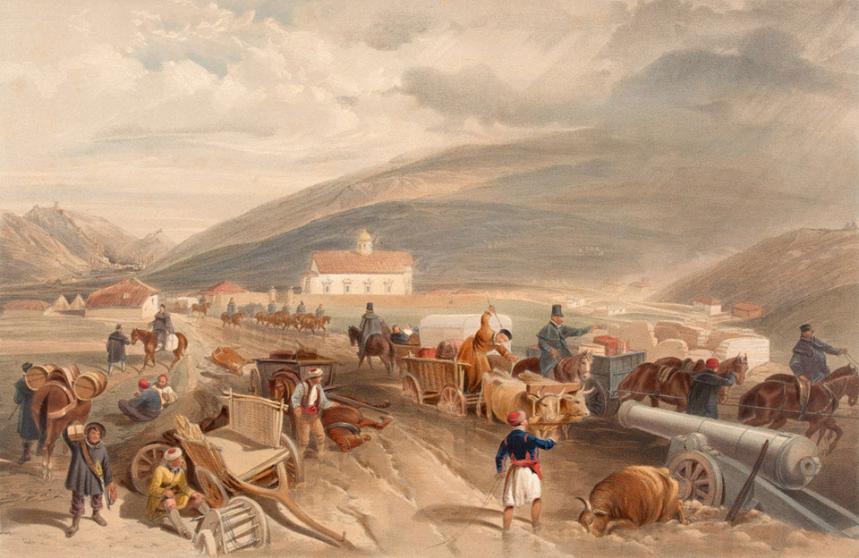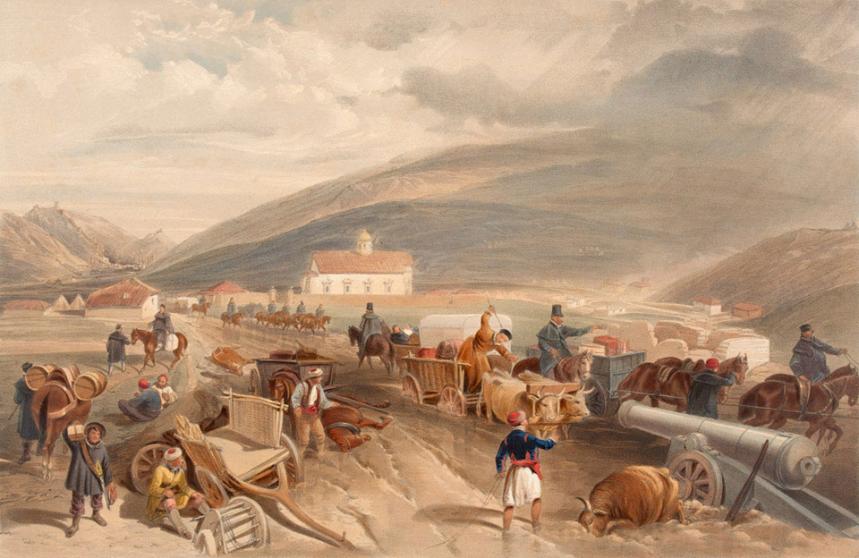A Good Silver 1854 Crimean War Medal
For a driver in the Land Transport Corps Driver Perch. The Crimean War (1853-1856) stemmed from Russia’s threat to multiple European interests with its pressure of Turkey. After demanding Russian evacuation of the Danubian Principalities, British and French forces laid siege to the city of Sevastopol in 1854. The campaign lasted for a full year, with the Battle of Balaclava and its “Charge of the Light Brigade” among its famous skirmishes. Facing mounting losses and increased resistance from Austria, Russia agreed to the terms of the 1856 Treaty of Paris. Remembered in part for Florence Nightingale’s work for the wounded, the Crimean War reshaped Europe’s power structure. The problems facing the logistic support to operations in the Crimean Peninsula took much longer to put right however, as "there could be no systematic and organised rectification of what was wrong until the Commissariat was properly staffed and what became known as the Land Transport Corps was formed and sent out." (Macksey, 1989, p. 12) For one thing, bureaucratic rules and inter-agency rivalry hindered the Commissariat and Land Transport Corps from cooperating efficiently. Staffing remained a problem as many of the personnel drafted in were rarely expert, energetic, competent or even trained. However, the situation was rescued by another individual, Colonel William McMurdo, who arranged for agencies to be opened throughout the Middle East in order to purchase mules, and after sufficient officers had arrived, McMurdo took command of the Commissariat transport and absorbed the Hospital Conveyance Corps. The Corps also supervised the clearing of the port of Balaclava and construction of a light railway to the frontlines, with the help of both civilian contractors and military engineers. This pointed to the development of military engineering as an important logistics service with the engineers also taking responsibility for running the 340-mile cable link installed in early 1855 by the English Electric Telegraph Company between Balaclava and the siege lines at Sebastopol. By the end of the war, the final capacity of the Land Transport Corps was three days rations for the 58,000 troops and 30,000 horses, 200 rounds of ammunition per man for 36,000 men and 2,500 men in ambulances. It is a tribute to those individuals who struggled to overturn the decay of the past that the British Army (after a terrible winter) was able to resume offensive operations in in mid-1855 and with French help, eventually capture Sebastopol in September, with an armistice being signed in February 1856. By that time, the logistic system supporting British forces in the Black Sea theatre had surpassed that of the French. (Macksey, 1989; Sutton, 1998) British forces were well fed, had adequate shelter and plenty of clothing – no-one could have taken
The Crimean War was a result of Russian pressure on Turkey; this threatened British commercial and strategic interests in the Middle East and India. France, having provoked the crisis for prestige purposes, used the war to cement an alliance with Britain and to reassert its military power.
Anglo-French forces secured Istanbul before attacking Russia in the Black Sea, the Baltic, the Arctic, and the Pacific, supported by a maritime blockade. In September 1854 the allies landed in the Crimea, planning to destroy Sevastopol and the Russian Fleet in six weeks before withdrawing to Turkey. After victory on the River Alma, they hesitated; the Russians then reinforced the city and attacked the allied flank at the battles of Balaklava and the Inkerman. After a terrible winter, the allies cut Russian logistics by occupying the Sea of Azov; then, using superior sea-based logistics, they forced the Russians out of Sevastopol, which fell on September 8–9, 1855
Code: 23248
Price
on
Request






